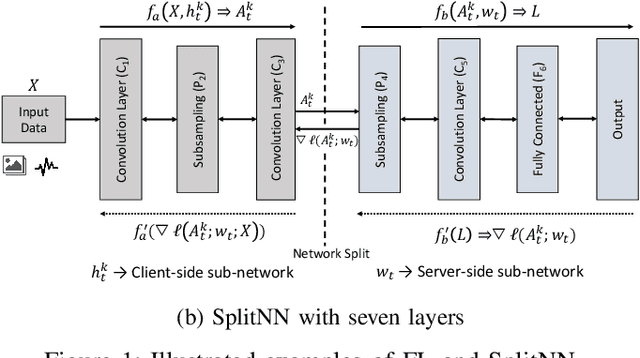Kyuyeon Kim
Deep Video Inpainting Guided by Audio-Visual Self-Supervision
Oct 11, 2023Abstract:Humans can easily imagine a scene from auditory information based on their prior knowledge of audio-visual events. In this paper, we mimic this innate human ability in deep learning models to improve the quality of video inpainting. To implement the prior knowledge, we first train the audio-visual network, which learns the correspondence between auditory and visual information. Then, the audio-visual network is employed as a guider that conveys the prior knowledge of audio-visual correspondence to the video inpainting network. This prior knowledge is transferred through our proposed two novel losses: audio-visual attention loss and audio-visual pseudo-class consistency loss. These two losses further improve the performance of the video inpainting by encouraging the inpainting result to have a high correspondence to its synchronized audio. Experimental results demonstrate that our proposed method can restore a wider domain of video scenes and is particularly effective when the sounding object in the scene is partially blinded.
End-to-End Evaluation of Federated Learning and Split Learning for Internet of Things
Mar 30, 2020



Abstract:This work is the first attempt to evaluate and compare felderated learning (FL) and split neural networks (SplitNN) in real-world IoT settings in terms of learning performance and device implementation overhead. We consider a variety of datasets, different model architectures, multiple clients, and various performance metrics. For learning performance, which is specified by the model accuracy and convergence speed metrics, we empirically evaluate both FL and SplitNN under different types of data distributions such as imbalanced and non-independent and identically distributed (non-IID) data. We show that the learning performance of SplitNN is better than FL under an imbalanced data distribution, but worse than FL under an extreme non-IID data distribution. For implementation overhead, we end-to-end mount both FL and SplitNN on Raspberry Pis, and comprehensively evaluate overheads including training time, communication overhead under the real LAN setting, power consumption and memory usage. Our key observations are that under IoT scenario where the communication traffic is the main concern, the FL appears to perform better over SplitNN because FL has the significantly lower communication overhead compared with SplitNN, which empirically corroborate previous statistical analysis. In addition, we reveal several unrecognized limitations about SplitNN, forming the basis for future research.
Can We Use Split Learning on 1D CNN Models for Privacy Preserving Training?
Mar 16, 2020



Abstract:A new collaborative learning, called split learning, was recently introduced, aiming to protect user data privacy without revealing raw input data to a server. It collaboratively runs a deep neural network model where the model is split into two parts, one for the client and the other for the server. Therefore, the server has no direct access to raw data processed at the client. Until now, the split learning is believed to be a promising approach to protect the client's raw data; for example, the client's data was protected in healthcare image applications using 2D convolutional neural network (CNN) models. However, it is still unclear whether the split learning can be applied to other deep learning models, in particular, 1D CNN. In this paper, we examine whether split learning can be used to perform privacy-preserving training for 1D CNN models. To answer this, we first design and implement an 1D CNN model under split learning and validate its efficacy in detecting heart abnormalities using medical ECG data. We observed that the 1D CNN model under split learning can achieve the same accuracy of 98.9\% like the original (non-split) model. However, our evaluation demonstrates that split learning may fail to protect the raw data privacy on 1D CNN models. To address the observed privacy leakage in split learning, we adopt two privacy leakage mitigation techniques: 1) adding more hidden layers to the client side and 2) applying differential privacy. Although those mitigation techniques are helpful in reducing privacy leakage, they have a significant impact on model accuracy. Hence, based on those results, we conclude that split learning alone would not be sufficient to maintain the confidentiality of raw sequential data in 1D CNN models.
 Add to Chrome
Add to Chrome Add to Firefox
Add to Firefox Add to Edge
Add to Edge